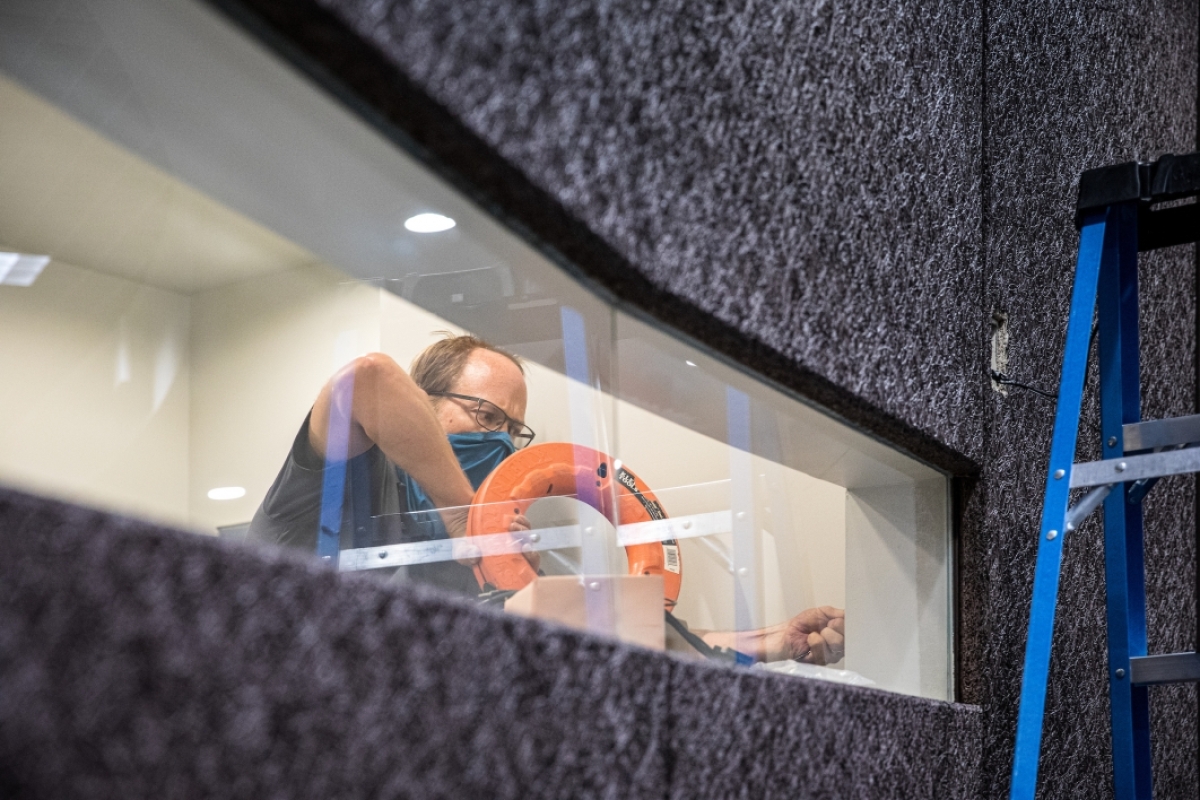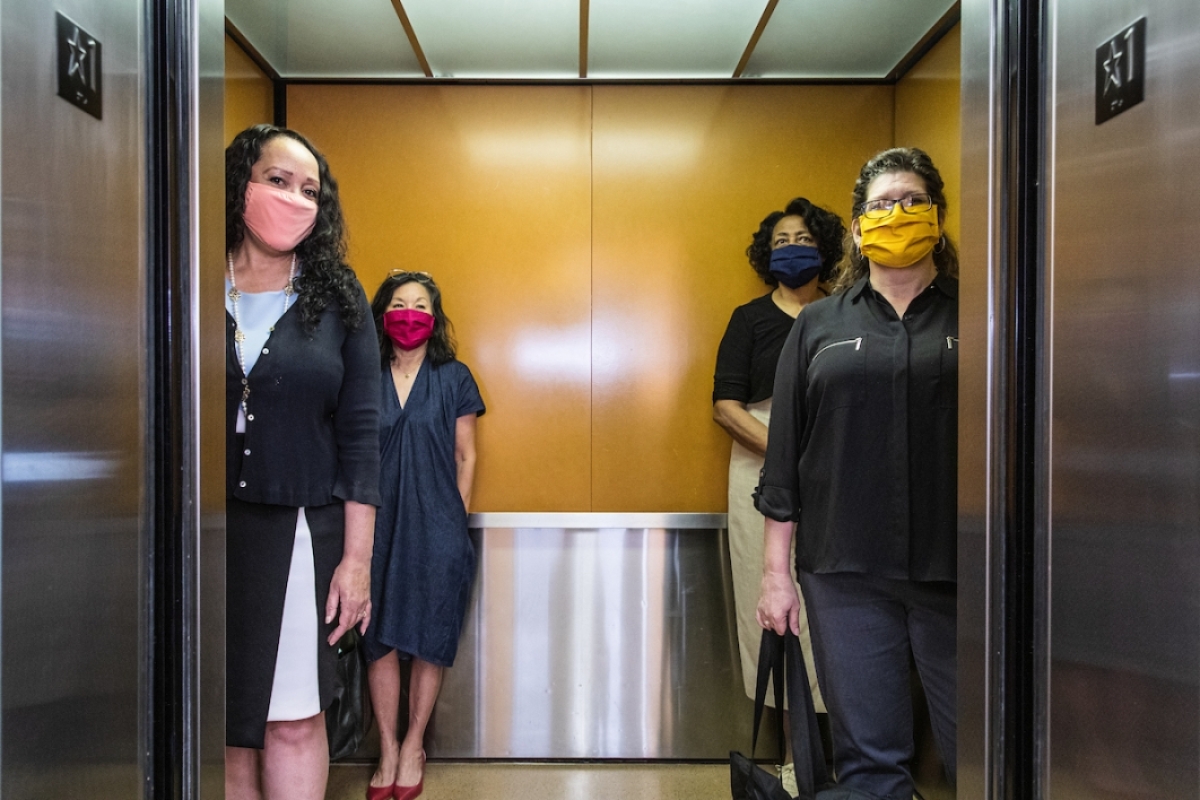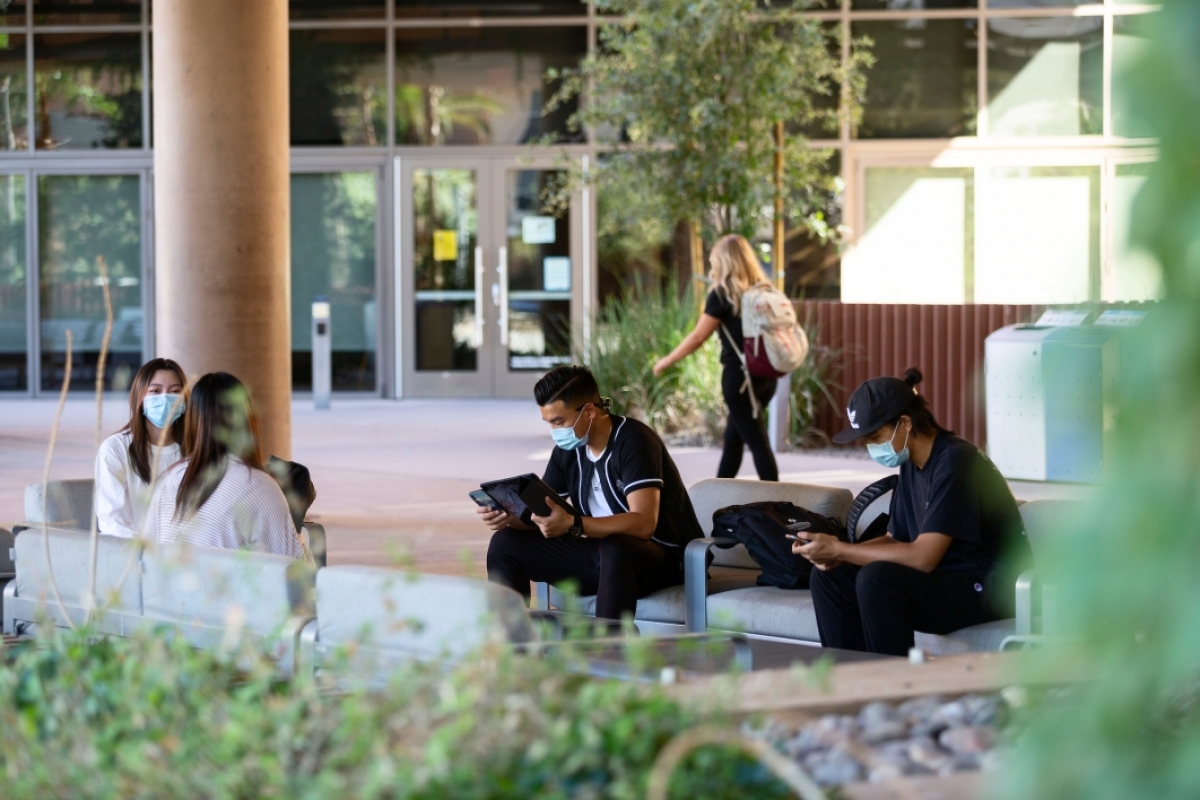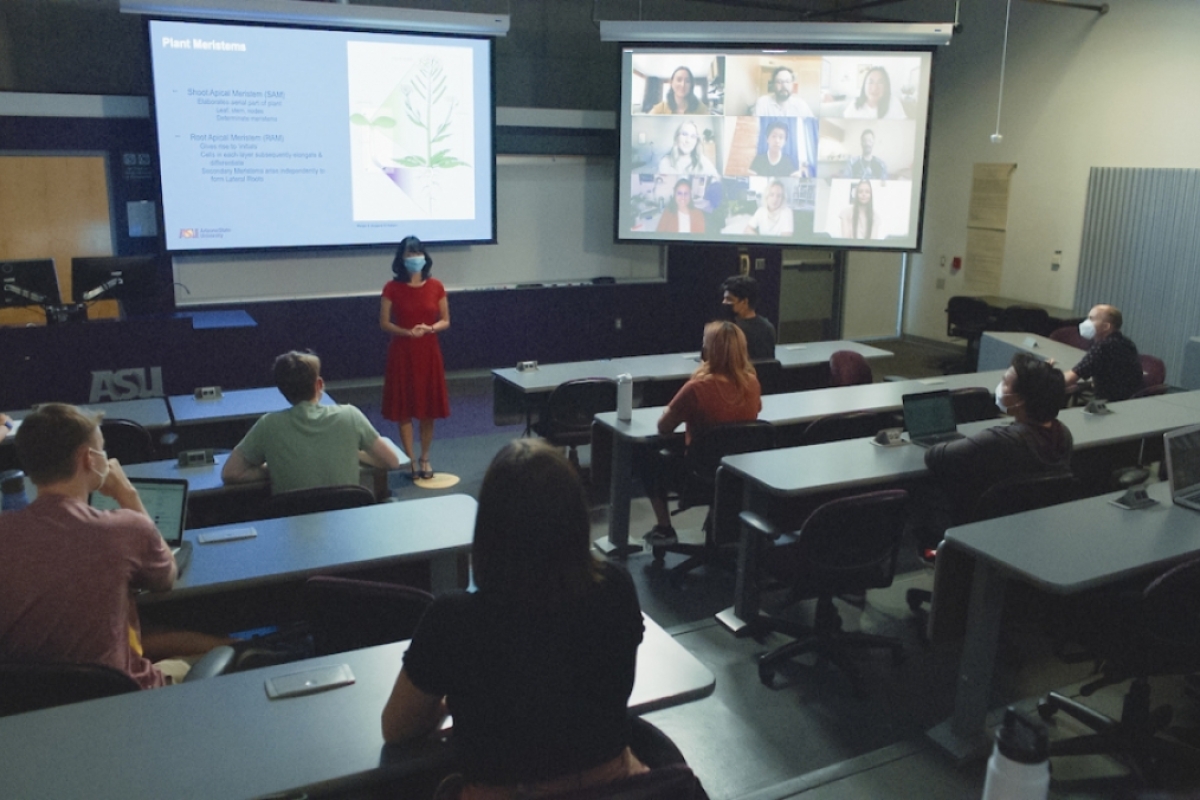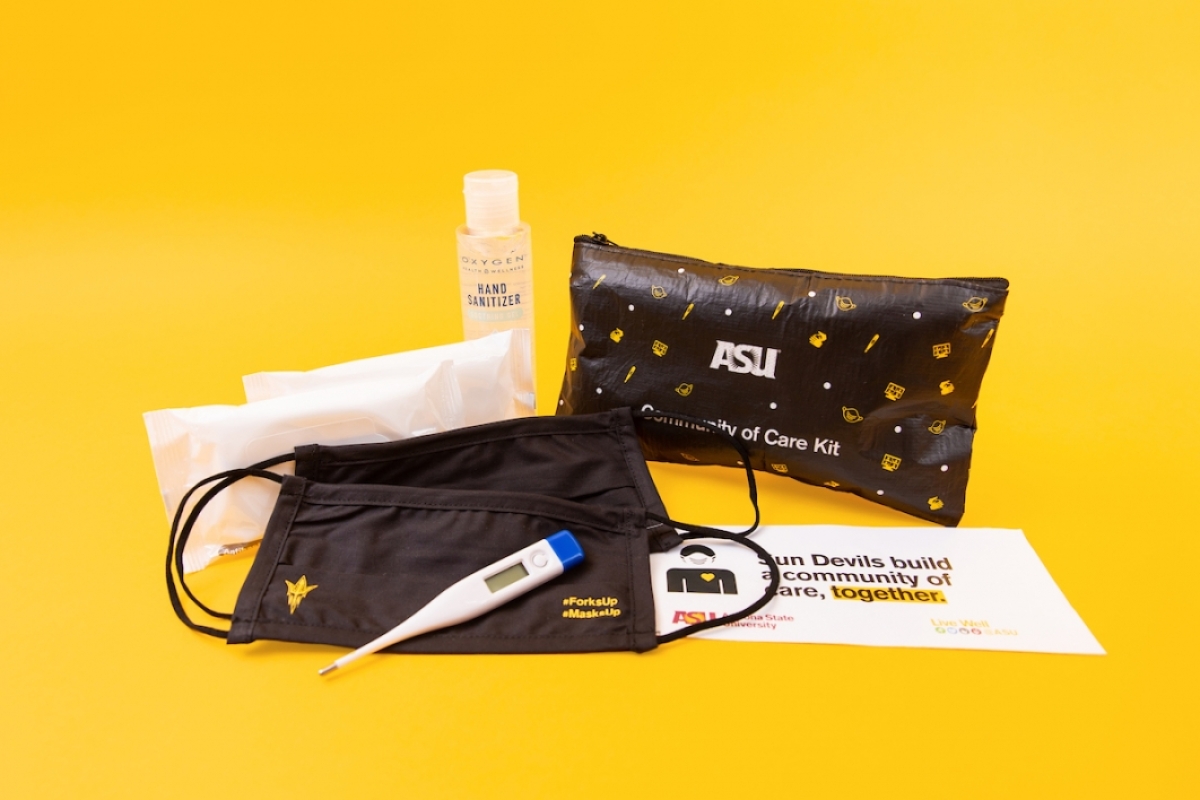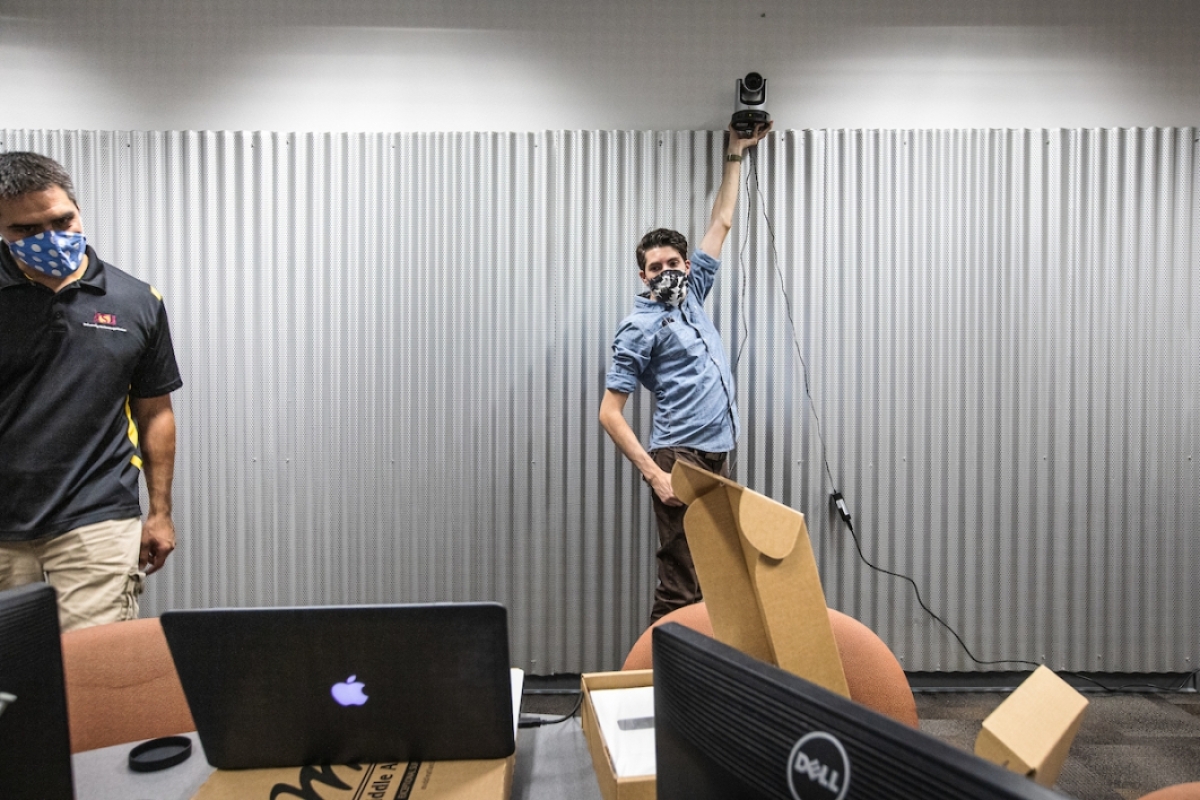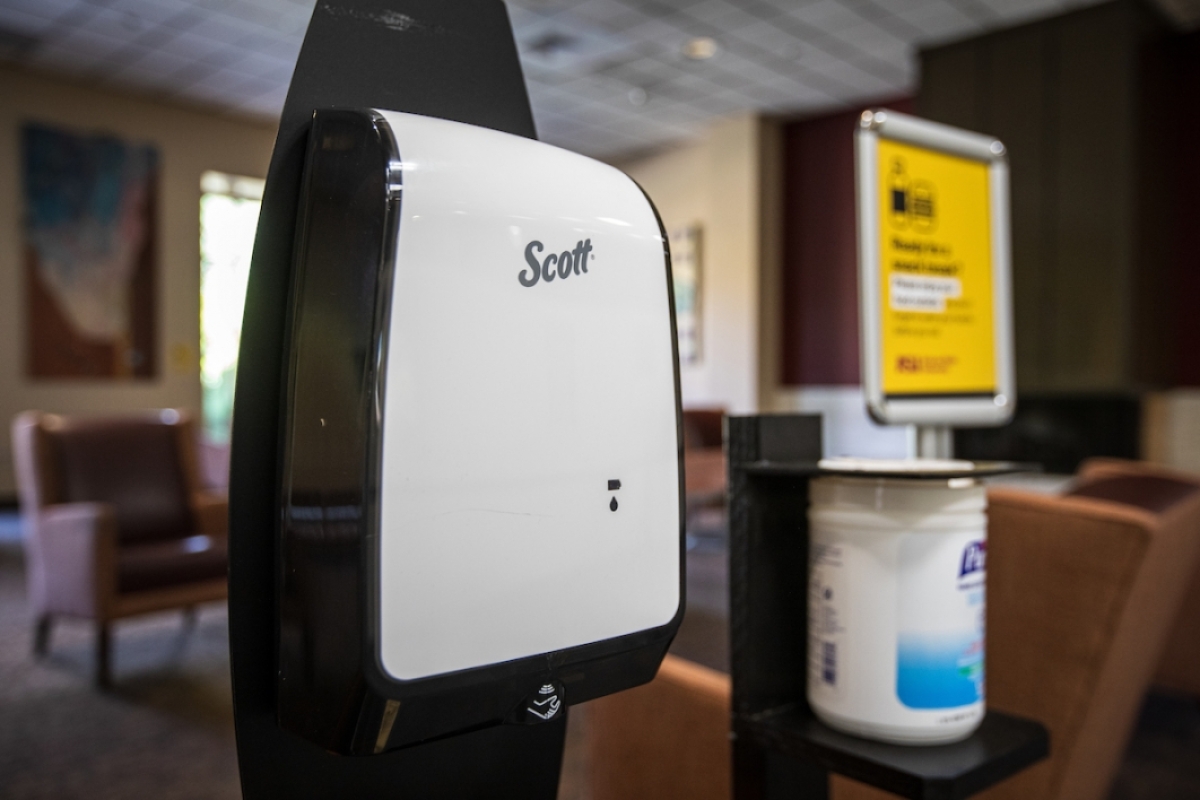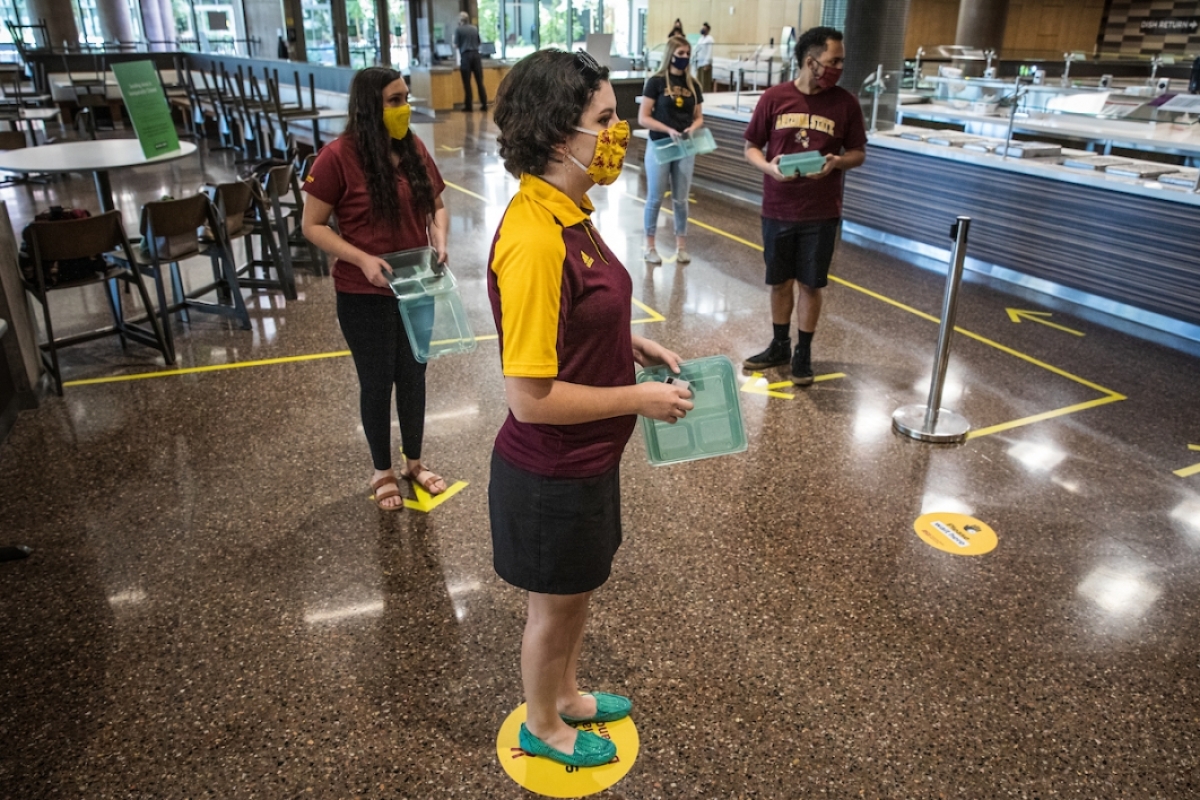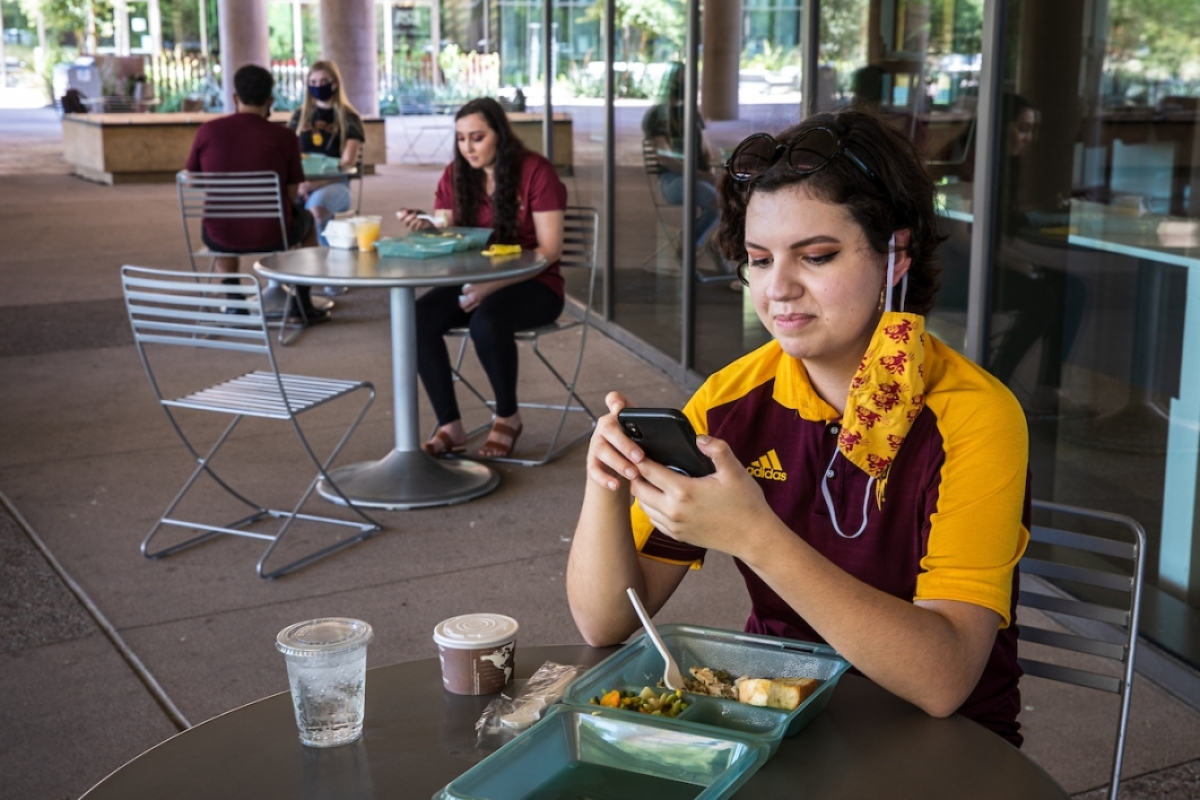Editor’s note: This story is being highlighted in ASU Now’s year in review. Read more top stories from 2020.
Sun Devils aren't letting the pandemic slow down their academic journey — Arizona State University is welcoming its largest student community in university history, with multiple learning modalities giving students options whatever their circumstance.
Despite historic challenges facing colleges and universities across the country because of COVID-19, ASU's fall semester will kick off with more than 127,500 new and returning students, a 7.6% increase over fall 2019. Of that total, over 53,000 are fully online students, ASU Online's largest fall enrollment to date.
“This is a tremendous time — a time of tremendous challenges and of tremendous creativity in meeting those challenges,” ASU President Michael M. Crow said. “And our ASU community is unbelievably resilient. I am confident in the protocols we have put in place — and I am also confident in our students' ability to keep moving toward their goals.
“Our fall numbers show that there is still an incredible hunger for learning. The institution has worked tirelessly these past months to make forward momentum a reality for our students, and we are infinitely more technologically advanced and prepared than we have ever been. We stand ready and able to assist students in any way that we can, and I can't wait to see what our students bring to the table.”
ASU's student population continues to grow more diverse. More than 40% of those enrolled for fall are students from underrepresented populations, and students who are in the first generation of their family to attend college make up just over 35% of all undergraduates. Military-affiliated enrollment increased more than 10% to 10,143 students.
The incoming first-year campus immersion class is the second-largest ever at 12,800, behind only last year's in size. Of that group, 46.9% are from underrepresented populations.
The first-year campus immersion class is one of the most academically talented to ever be admitted to ASU. Approximately 53% of the class earned one of the university's top academic scholarships, collectively called the New American University Scholarships. Of the Arizona resident, campus immersion first-year students, more than 60% received a New American University Scholarship, an increase from the fall 2019 first-year cohort from Arizona.
First-year student Cole Teglas from West Hills, California, always had an inkling he'd be a Sun Devil — his dad graduated from ASU in 1989 and Teglas said it was like he was “supposed to go here.”
But his decision was cemented when he visited ASU.
“It felt like home when I walked on campus; everyone was so nice,” said the political science major and student in Barrett, The Honors College. “It felt like this is a place where I can thrive and be the best I can be. It was not only the campus, it was the people. Everyone I talked to was so nice and so friendly. It felt like everyone wanted to help me succeed.”
He will be one of many students participating in a blend of on-campus and remote classes this fall; Teglas has two of each.
“Everyone at the school has been really informative, what procedures are in place, what’s going to happen and how they’re going to protect us. I felt completely safe coming to school,” said Teglas, who most looks forward to meeting new people at ASU. “Obviously the interactions will be a little different to how they would be in a normal year. ... We don’t know any different. This is normal for us now, and we’re just trying to make the best of it and do whatever we can to meet new people and have that freshman experience and stay safe as possible.”
Campus life for fall
Of the fall semester's more than 127,500 students, nearly 75,000 are immersion (on campus) students on ASU’s campuses in the greater Phoenix area and at centers and locations across Arizona. Though some may choose to attend classes remotely from home via a newly launched learning modality, ASU Sync, thousands of students have returned to ASU's campuses to continue their college journey.
And the university has been busy over summer preparing for their return, outfitting classrooms with technology including cameras, displays and microphones so that students joining classes remotely can participate in live instruction happening synchronously on campus.
Since the announcement of fall semester plans in June, the university has held extensive ASU Sync training for faculty and hosted six weekly webinars from mid-June through July for students and parents, during which ASU academic and student affairs leadership explained how classes will be held to provide student flexibility while ensuring a high-quality academic experience. Topics of campus health and safety were also covered. Each webinar reached capacity of 1,200 and were livestreamed on YouTube to ensure that students and parents could learn more about the fall semester.
“Given the challenges of COVID-19, the ASU charter principles of providing an excellent academic experience that is accessible to all learners took on new meaning this year and was at the heart of all our planning and decisions regarding fall start,” Executive Vice President and University Provost Mark Searle said. “We believe that no student should have to pause their academic goals, and our fall semester learning modalities ensure that.
“I commend our continuing and new students and their family members for their resolve and perseverance, as well as our ASU faculty and staff for preparing for a fall semester that enables students to continue their academic journey, wherever they are located.”
First-year student Alicia Werner didn’t expect to be learning in any other way than in traditional in-person classes, though the different modalities offered this year were a bonus should she ever need them.
“At first, I felt I was least excited about the hybrid learning experience, only because I thought I wouldn’t have fellow, more experienced students to be able to go to and ask questions,” said Werner, who will be majoring in vocal performance. “But now I see that everybody else is on the same learning curve as me. I don’t have to worry about feeling behind or that I should know what I’m doing right away, right now, because there’s a lot of students who are in the same situation. We’re all having a first-year experience, in a way.”
ASU has also instituted measures encouraging wellness while allowing students to continue taking steps forward in their studies:
- A mandatory daily health check for all employees and students.
- Free saliva-based COVID-19 testing with fast turnaround times through the Biodesign Institute.
- Community of Care training required of students and employees, as well as Community of Care kits featuring two face coverings, a thermometer, a bottle of hand sanitizer and wipes.
- A face-covering requirement for everyone — students, employees and visitors — on all ASU campuses and locations, both inside buildings and in outdoor community spaces where distancing is not possible.
- Twice-daily disinfecting of high-contact surfaces.
- Distancing measures, including classroom-density reduction strategies, extensive signage and additional outdoor seating.
Senior John Leach is limiting his time on campus, but he’s glad to be back in the classroom.
“I think my experience this year will be obviously different from what I'm used to, but awesome all the same,” said Leach, who is president of the Devils' Advocates, students who lead campus tours. “With the right precautions, I hope we can all enjoy our time at ASU, and I think my senior year will be one of the best.”
Options in how to attend class
ASU's three learning modalities — immersion (on campus, in person), ASU Sync and iCourses — allow students the flexibility to learn in a way that best serves their needs.
In-person classes will be available and are set up for low student density and physical distancing. The majority of classes will also be available through ASU Sync, a technology-enhanced, fully interactive remote learning, using live lectures via Zoom. The ASU Sync approach can be used simultaneously with in-person instruction to accommodate students in different circumstances and enable social distancing in classrooms or as stand-alone technology. It offers the benefits of face-to-face instruction in an interactive group learning environment.
In addition, ASU offers more than 2,400 iCourses for on-campus students. These classes are designed to be taken entirely online with lectures available on demand. ASU Sync and iCourses also give flexibility to international students who may not be able to travel to campus this fall, as well as accommodate domestic students who decide to learn from home for personal health and safety concerns.
Unlike online classes, students attending class via ASU Sync can engage with classmates and their professor in real time. Over the summer, the University Technology Office equipped or enhanced more than 800 learning spaces with Zoom capabilities at all ASU campuses and added new technology tools. Students attending class via ASU Sync can interact with the instructor, see what’s written on classroom whiteboards, view slide presentations and engage in collaborative peer projects.
With a few of his courses being taught through ASU Sync, Leach is taking all the challenges of this semester in stride and choses to see them as an opportunity.
“I'm anticipating that I'll learn a lot about how to balance everything from home, while still having deadlines and commitments,” he said. “It's going to be a valuable skill when entering the workforce.”
The new learning modalities provide options for those students who want to attend ASU but weren’t quite ready to make the leap to come to campus.
Arya Lukka, a biological sciences major, is no stranger to ASU or the Arizona heat. She grew up around campus, and when she visited Barrett, The Honors College, it felt like she was in the right place.
Lukka has her sights set on medical school and knows the challenging journey to get there. She wants to stay on track — a gap year was not an option for her. This semester, she’ll begin her first year of college from home and was glad ASU Sync allowed her to start with Barrett.
“It helped a lot when I heard about ASU Sync and how that is an option for all students,” Lukka said. “... The professors have been extremely supportive, which made my decision to stay home much easier."
Excited and nervous to make new friends, Lukka is looking forward to setting foot on campus and experiencing campus life when she feels ready.
“This definitely isn’t the way I envisioned my first year of college, but I’m hoping to learn a lot and make incredible memories even though the situation might be a little different.”
ASU Online seeing record year
Growth is the keyword for ASU Online — both in number of students and number of new programs.
This fall is the first time ASU Online will have more than 53,000 students for a single semester, a more than 22% increase over fall 2019. First-year student enrollment is up more than 51%, and the year-to-date total number of graduate students enrolled is up over 25%.
Those students have their choice from a growing slate of degrees — ASU Online launched 44 new programs for fall 2020, its largest launch yet and nearly double what launched the previous year.
The highest performers to date include a bachelor’s degree in astronomical and planetary sciences, which will prepare students for careers in science policy, journalism or K-12 teaching; a master's degree in political psychology, which targets professionals working in politics, media and nonprofits; and a master's degree in nursing and nursing education, newly expanded to online.
“The continued growth of ASU Online reflects the increasing demand for what ASU, uniquely, is able to offer: A set of rigorous degree programs that engage learners, advance them in their aspirations, and are equivalent in every way to our campus immersion offerings,” said Phil Regier, university dean for educational initiatives and CEO, EdPlus at ASU.
“This year we are launching many programs, several of which no other online program can offer — because no other online program has a faculty of our depth and quality, combined with the university's commitment to increasing access."
RELATED: Explore the range of new programs for fall, both online and in person
Head start this summer
Some students' academic journeys continued full speed ahead over the summer, when ASU expanded its offerings and offered summer tuition awards to new students, allowing learners both in and outside the ASU community to keep up the momentum.
Aerospace engineering major Logan Mizuba of Hilo, Hawaii, was one of ASU's first-year students who took advantage of a Summer 2020 Award and completed six credits through ASU's summer sessions to get a head start on his degree.
Mizuba had an intense desire to learn and advance his studies, and ASU’s summer courses offered via Sync allowed him to get ahead and save time for a study abroad semester in the future. Mizuba said the English course he took was a fun challenge, introducing him to new forms of rhetoric.
“It was a good kick-starter and getting my mind prepared for the type of work and difficulty of it (college classes) and the course load,” Mizuba said. “It showed me what to expect, which I think is really great.”
ASU offered more than 5,000 courses this summer for every type of learner — from admitted first-year students who want to get ahead on credits to “visiting students” from other institutions to K–12 pupils.
“What an unbelievably complex but exciting time to be learning,” Crow said. “COVID-19 has accelerated the time in which colleges and universities will play a larger role in creating positive social outcomes.
“We are never going back to any reality that places barriers in the way of student achievement. And that's what this is all about — persevering through this volatile moment and moving forward into bright futures.”
Top photo: Assistant Professor Edward Ofori speaks with students both in a socially distanced classroom and on a Zoom screen. Photo by ASU
More Sun Devil community

ASU president connects with veterans during town hall
Arizona State University President Michael Crow shared his family’s military background, provided university updates and reaffirmed ASU’s commitment to military-affiliated students during a town hall…

Tested tips for taking exams
With May quickly approaching, many students are starting to prep for their most important tests of the year — final exams.Toni Miceli, the inaugural director of the bar exam success program at…

School of Transborder Studies celebrates 15th anniversary
During the summer before his freshman year at Arizona State University, Salvador Macias participated in the AGUILA Youth Leadership Institute, a college access organization designed to help young…



